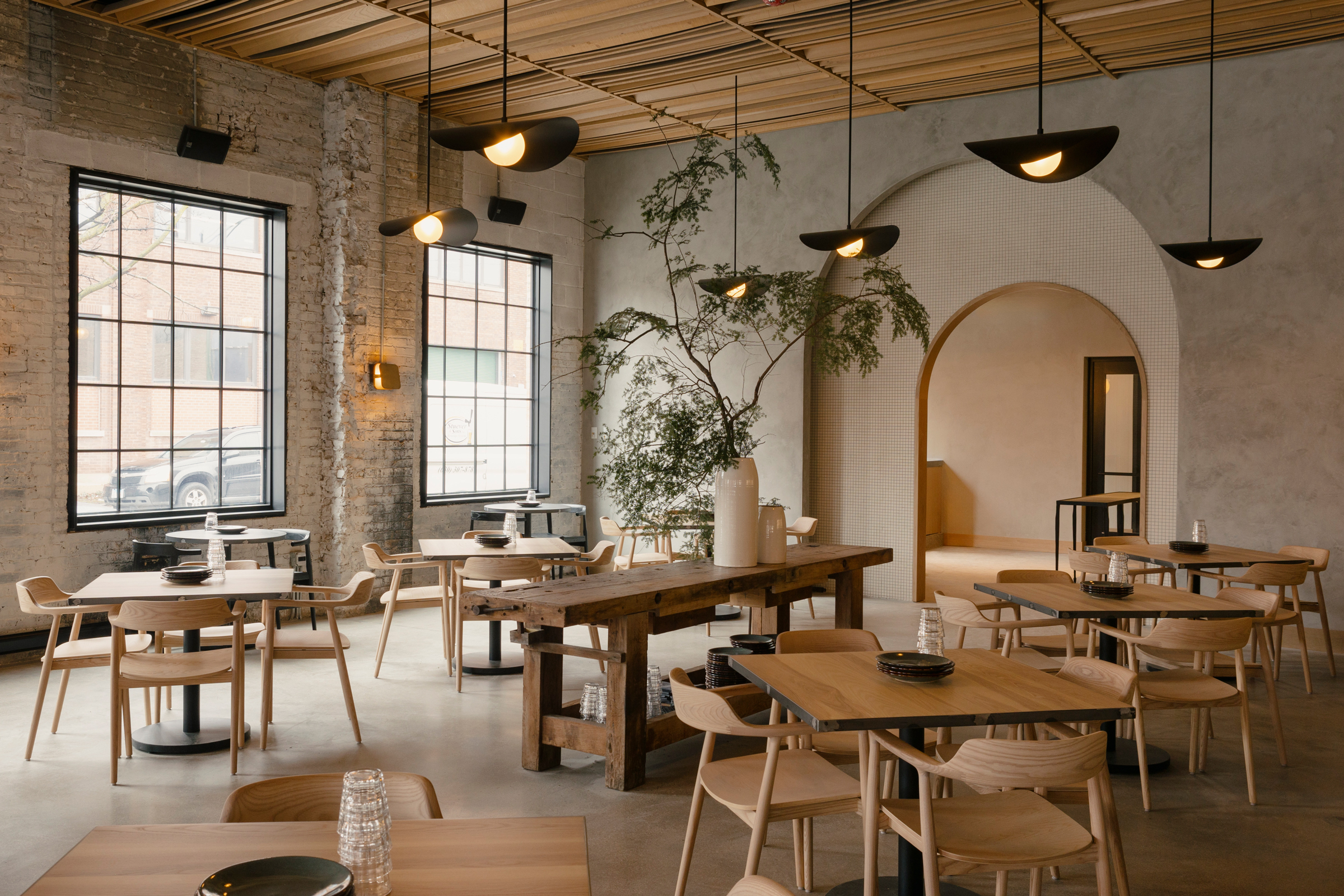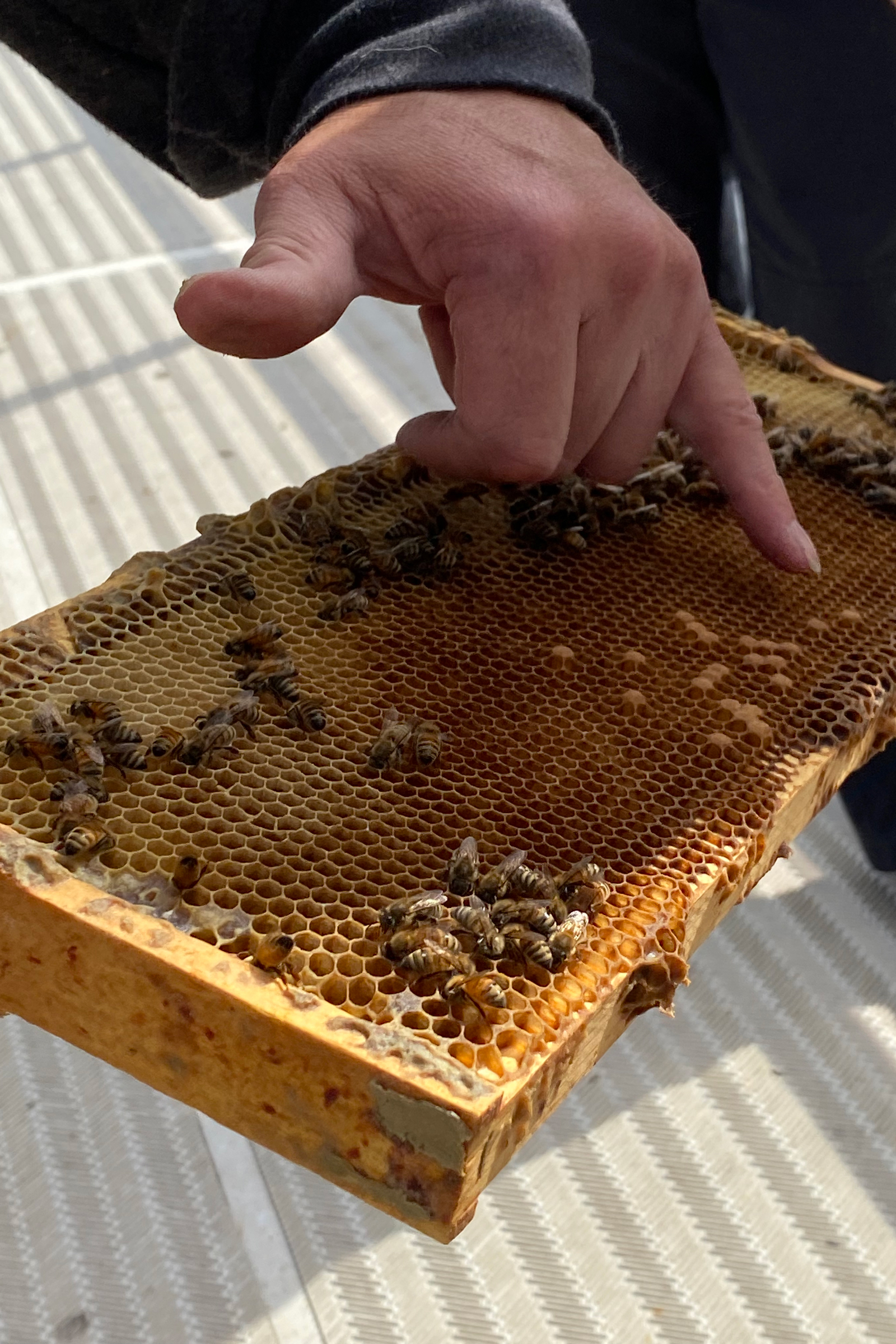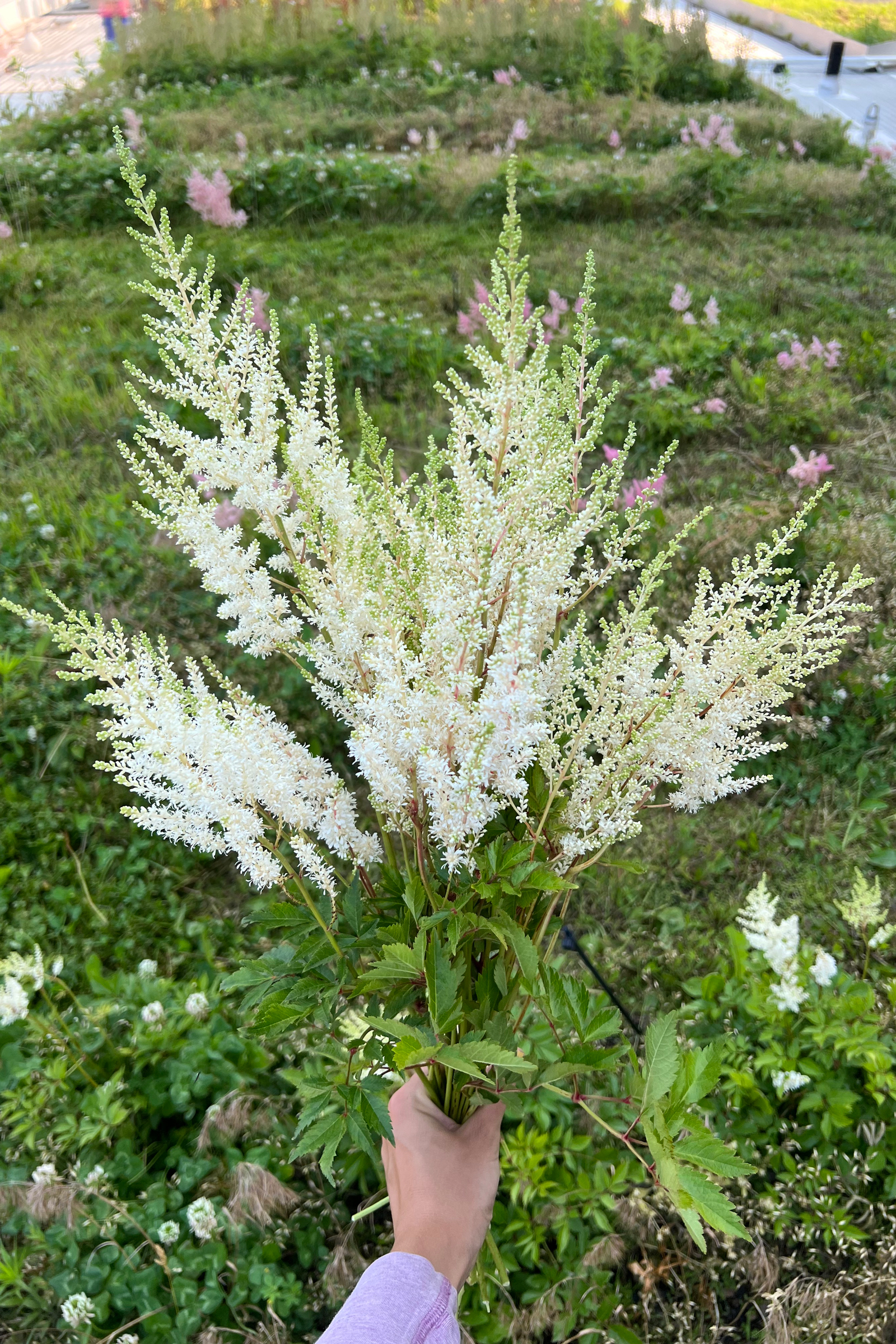Story at a glance:
- Maxwells Trading is part of a business collective consisting of the restaurant, The Roof Crop headquarters, a retail space called Third Season, and a food and beverage innovation hub called Flashpoint Innovation.
- Third Season is The Roof Crop’s retail, coffee, and apothecary shop featuring items and ingredients that come from the roof as well as locally grown flowers.
There is so much life inside Maxwells Trading. More than a restaurant, this building that used to be a manufacturing warehouse near Chicago’s West Town is now three lively entities that celebrate all things made with care.
Maxwells Trading is part of a larger collective of food, design, and sustainability-centric businesses. The project spun off from The Roof Crop Farm, founded by Tracy Boychuk. The building on Carroll Avenue reopened after sitting vacant for awhile when The Roof Crop became the anchor tenant, launching in 2015 with the installation of its first commercial farm. “It was very rough, like someone had tried to renovate it but never used it. It was empty I think for quite a while,” Boychuk says. The building was a single-story, open warehouse, believed to date back to 1928, that they eventually added on to.
In addition to the restaurant and The Roof Crop (TRC), the building is now home to an apothecary and design store called Third Season, also founded by Boychuk, and Flashpoint Innovation, a food and beverage consultancy with its own high-end kitchen upstairs where clients test menus and more.
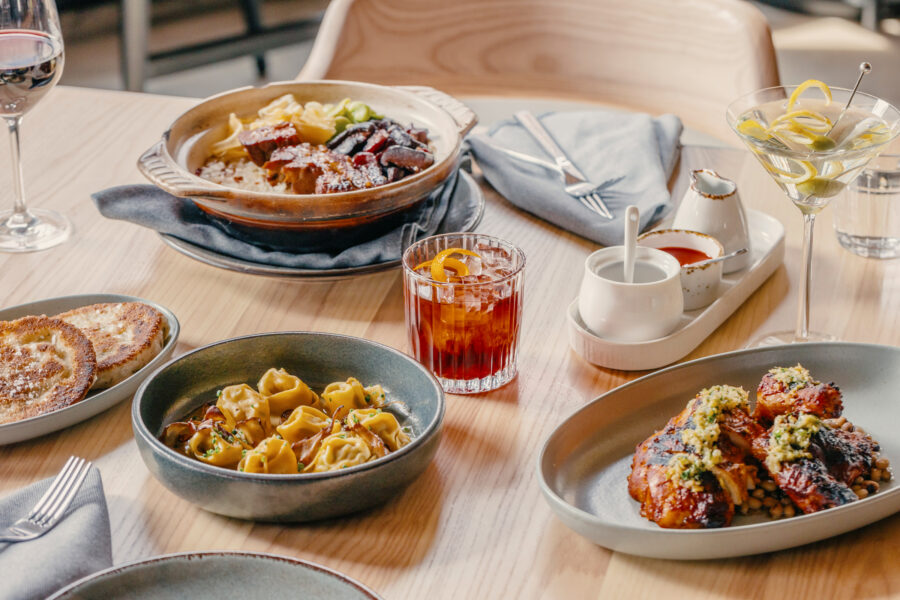
Maxwells Trading is a new concept from Underscore Hospitality that opened in late 2023 in Chicago. Photo by Jeff Marini
Most people will likely initially interact with the building via the main floor restaurant, Maxwells Trading—an open kitchen concept from Underscore Hospitality, led by Chef Partner Erling Wu-Bower and Executive Chef Chris Jung. Many ingredients for the dishes and cocktails served are sourced onsite from one of the three greenhouses or plentiful gardens on the roof. Even the honey comes from TRC beehives. It’s an evolving example of what TRC can do, as they build farms, design products, and develop experiences to engage clients in a shared mission of sustainability all over the city.
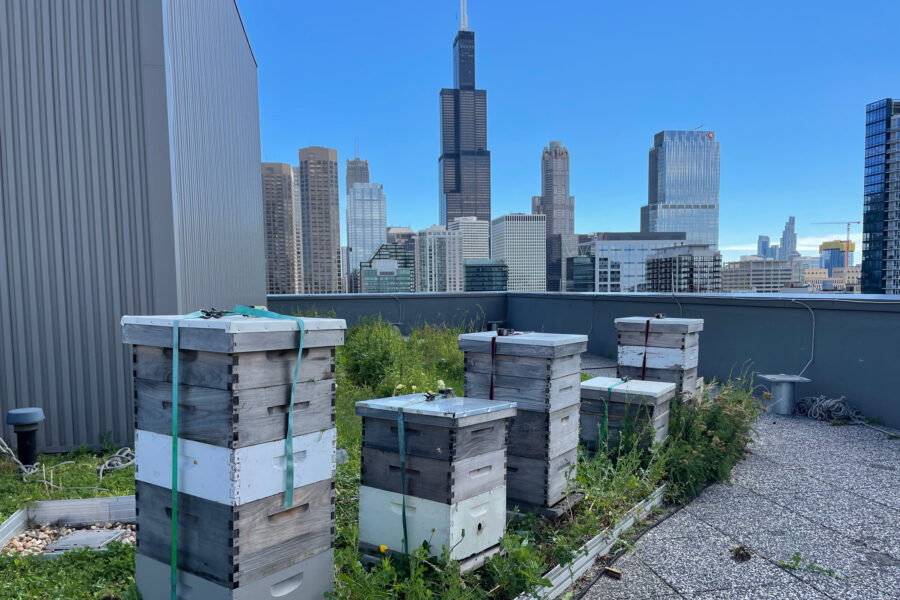
TRC maintains a number of beehives around the city, including on the roof at Maxwells Trading. Photo courtesy of The Roof Crop
Walking up to Maxwells Trading on a summer day, windows are open and light pours in. A cohesive, considered design carries across the three businesses and embraces the building’s industrial history, from concrete floors to some of the original brickwork. The dining room ceiling features a series of warm wooden slats that evoke broken shutters and provide visual balance against the concrete floors, while a double arch dreamed up by Bureau Gemmell founder Lynsey Sorrell and designed by WDA Design separates the restaurant from the Third Season retail space. The double arch also provides a beautiful focal point and can be closed with an oversized linen curtain for private events.
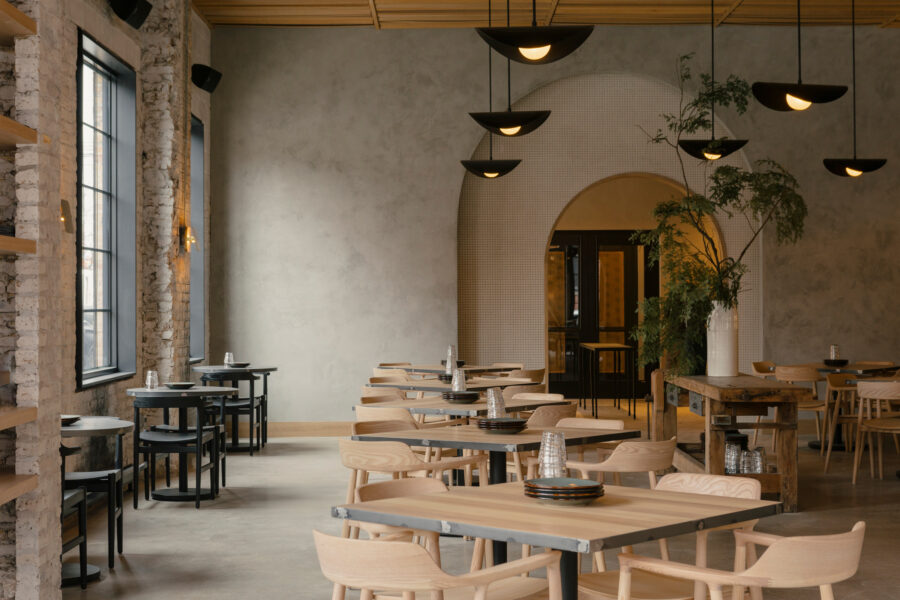
A double arch designed by Bureau Gemmell founder Lynsey Sorrell separates the Maxwells Trading dining room from the Third Season retail space. The double arch also provides a beautiful focal point and can be closed with an oversized linen curtain for private events. Photo by Jeff Marini
“We reused everything we could, and we maintained the integrity of the building as much as we could,” Boychuk says. In the instance when something did have to be new, they let the building’s original aesthetics guide the way. “There was sort of this mantra in the project about how to stay true to what the building’s foundation was,” she says. They kept the original color scheme and repurposed wood from another project where possible.
Much of the design throughout the building was brought to life by Boychuk and Sorrell as well as Meg McMorrow Design and WDA Design. WDA’s Warren Aftahi designed many of the benches and stools. Leather on the barstools were sourced from the neighborhood, up the street from Tannery Row, and a local millworker made the ceiling’s wooden slats, which hide the acoustic treatments.
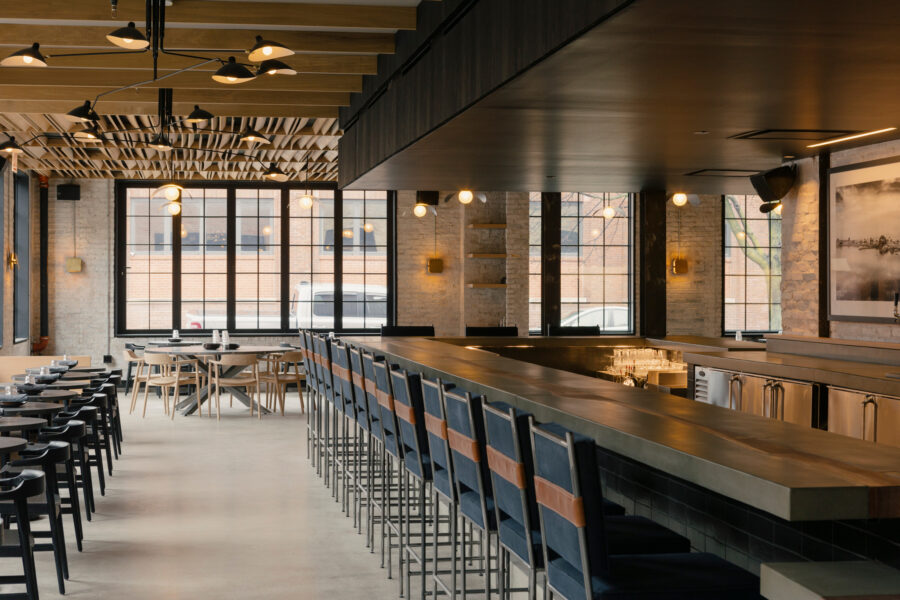
The bar top at Maxwells Trading features concrete and wood, using reclaimed live edge walnut slabs and burying the live edge with concrete. Photo by Jeff Marini
On the other side of the double arch, Third Season sells everything from the honey made onsite to Ikebana vases from a local maker down the street. The shop keeps regular daytime hours, but restaurant patrons can also pop in anytime they’re dining if they want to add a special item to their bill or pick up a fresh bunch of TRC flowers.
Just beyond the store is the Third Season design studio, where a team works on floral designs and dries flowers. The large space also hosts flower-arranging and dye classes or can be reserved for events. Boychuk’s husband is an avid vintage book collector, and finely curated book collections can be found on both floors, many of them for purchase.
“We also had the opportunity to return the window and door expressions to something that felt more old-period appropriate,” Boychuk says. The design team wanted everything to feel open and warm but also industrial and true to its beginnings. In TRC’s upstairs office space, they chose a modern version of glass block, completely clear, with darker grout. It’s both true to what would have been in the neighborhood originally and allows for great light.
On the roof in late April the TRC team was experimenting with different kinds of drip irrigation. “We can now quickly plug and play as we need,” Boychuk says with excitement. “We’re not locked into it always being this kind of crop in that bed. I can put drip tape down here and do one crop, and then I can pull the drip tape up and put on that sprinkler head and do a different crop. Right now we’ve got arugula and herbs growing.” The tomatoes were due to be planted soon.
- You can also buy honey from The Roof Crop at Third Season inside Maxwells Trading. Photo courtesy of The Roof Crop
- The Roof Crop (TRC) is a design-focused, urban agriculture initiative that values and promotes sustainability, ecology, and community engagement. Photo courtesy of The Roof Crop
TRC worked with a soil scientist to develop an effective, more lightweight mixing soil they’re now using on the roof. “It’s more tillable. It’s more farmable. It can be more productive,” Boychuk says. “Really what we do is productive landscaping. It’s like what any other green roof company or any other landscaper would do, except that most landscapers are green roof people—they put their green roof on and then they’re done, or they maintain it and they’re done. You have a relationship with us past just the landscaping.”
The combination of business types is part of what the team hopes will keep people interested in supporting all of these companies for the long haul. The engagement piece makes it easy for people to invest in, Boychuk says, but that’s where many developers get stuck. “People are actually simpler than you think. They like nature; they want to do the right thing. At the buildings we’re farming or doing these productive landscapes on, it’s a big draw for them that it’s not just a sedum green roof on there. Even if they don’t ever see it, they love the idea that there’s something more than that, that it’s contributing to pollinators, for example,” she says. “When you have that engagement, they start to talk about sustainability, and then they start to value sustainability.”
The combination of partners with related but varied interests is a win-win, too, she says. “When you put partners together like this who have these different audiences, you get to create a Venn diagram where they cross over. That’s where there are exciting opportunities that maybe none of us would have thought of. And that’s when you see success.”
Project Details
Project: Maxwells Trading
Location: Chicago
Completion: December 2023
Size: 4,300 square feet
Architect: Bureau Gemmell
Interior Design: WDA Design, Meg McMorrow Design
Greenhouses: Wisconsin Greenhouse

